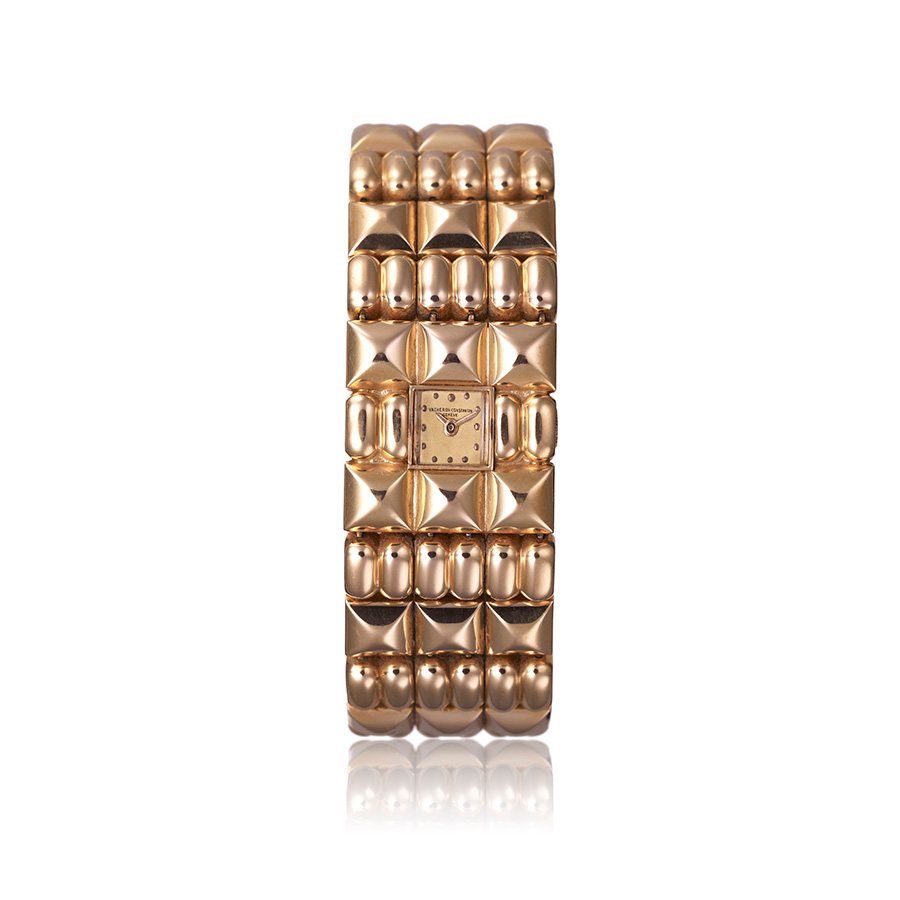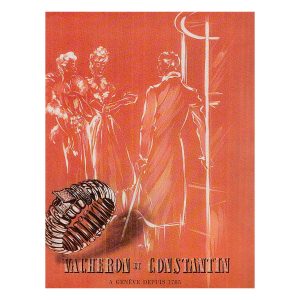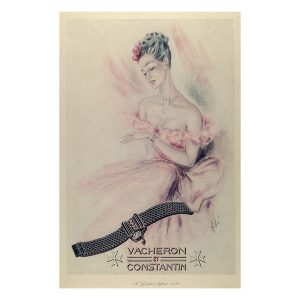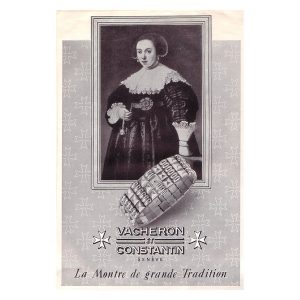
Ref.10771
Manufacturing Year 1946
Ladies’ watch, cuffed, in 18K red gold, square dial, silver with 12 gold markers, integrated gold bracelet./strong>

Ref.10771
Manufacturing Year 1946
• The wristwatch – as opposed to the pocket watch – was described as fancy watch immediately upon making its timid and discreet appearance at in the late 19th century. It had to find its own identity and personality and free itself from the age-old constraints inherited from watches worn as pendants or in a pocket.
• Wearing the watch on the wrist became a source of endless creativity and the initially round cases evolved into a variety of often daring shapes. Our Maison distinguished itself by its boldness and its boundless creativity.
During the 1940s, this creativity was expressed in a new aesthetic language, with models that were both spectacular and brimming with character – this 1946 model being an excellent example.
• The end of World War II also marked the advent of gold as the metal par excellence in watch design. Bracelets and cases were made of this same precious material, whereas the war years had been all about deprivation and restrictions. Echoing the “New Look” fashion in Haute Couture, ladies’ watches came in large, opulent and even massive cuff-type models,
often with a cover concealing the dial.
• Jewellers were to nurture the watchmaking world with their creative approach and influence the advent of the jewel-watch with rose gold bracelets and sometimes even two-tone bracelets, integrated into the cases on which the crowns are barely perceptible so as not to perturb the smooth beauty of the design.



From the early 1940’s to the late 1960’s, the representative characteristics of the Art Deco style have gradually disappeared. The pure and sober lines were replaced by voluptuous designs.
In this period named Modern Era, accessories were vital components of an outfit, and secret timepieces became fashionable. Advertisements preserved in Vacheron Constantin archives show how innovative and responsive our Maison was towards women’s demands.
©2022 Vacheron Constantin All Right Reserved